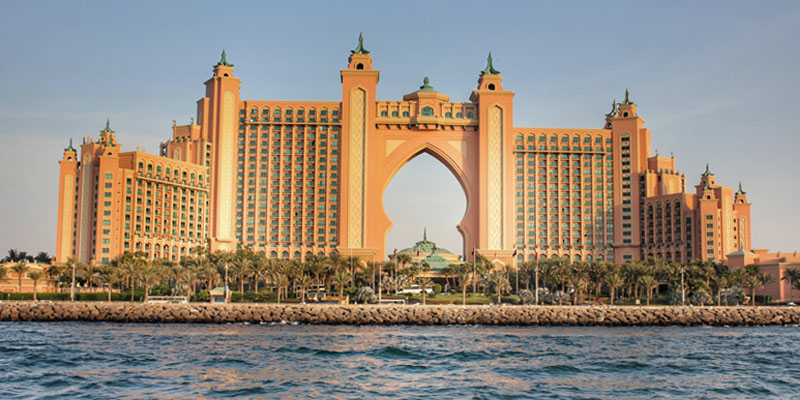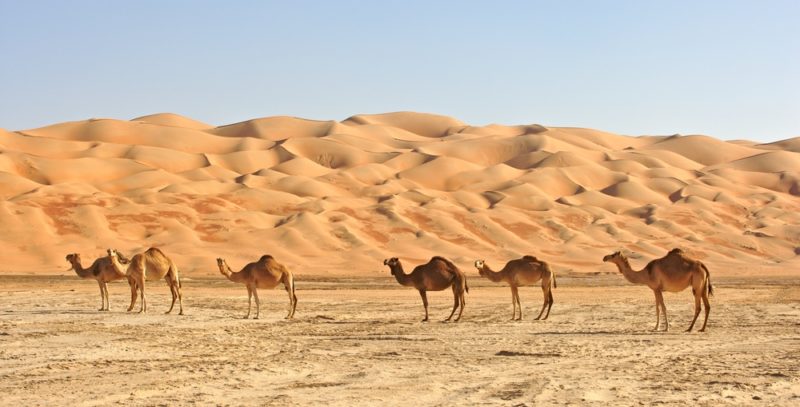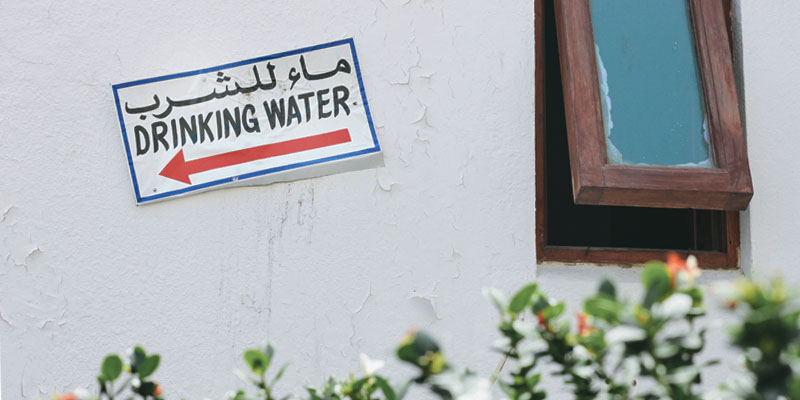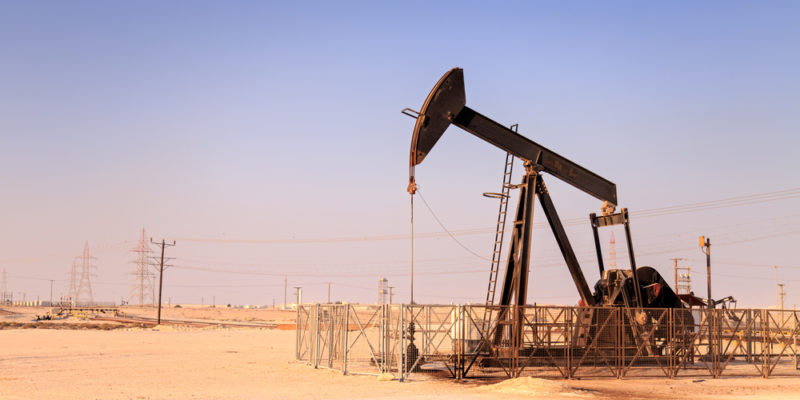We explore the Middle East, and describe its location and physical geography. In addition, we discuss its economy, and more.

What is the Middle East?
The Middle East is a geographical region located in northeast Africa and southwest Asia. Though it is a commonly used term, there is no widespread agreement as to which countries are encompassed within this region.
The criteria for defining the boundaries of the Middle East are geographical, cultural, ethnic, and religious, which explains why authors remain divided as to its limits and definitions. Nevertheless, it is generally accepted that the countries comprising this region are Egypt, Iran, Turkey, Iraq, Saudi Arabia, Yemen, Syria, Jordan, United Arab Emirates, Lebanon, Palestine, Kuwait, Israel, Qatar, and Bahrain.
The term Middle East came into use in the Americas and Europe in the late 19th and early 20th centuries. Previously, the term Far East was used to refer to the Asian territories farthest from Europe (Japan, China, Korea) and Near East to make reference to the Asian and African countries closest to Europe. Today, many of these countries are considered part of the Middle East, which shows that the criteria for delimitation are not clearly established.
- See also: Europe
Characteristics of the Middle East
Among the main characteristics of the Middle East region are:
- It is located between northeast Africa and southwest Asia.
- There is no single boundary delimitation criterion.
- It covers an area of nearly 2.7 square miles (7 million km2).
- The population of the countries comprising it amounts to over 430 million inhabitants.
- The predominant climate is arid (hot and dry).
- Annual rainfall does not exceed 11.8 inches (300 mm).
- The main economic activities are oil and natural gas production, agriculture, mining, and tourism.
- The most widely spoken language is Arabic.
- The majority religion is Islam.
- Political, military, and territorial conflicts are frequent.
Population and countries in the Middle East
The total area of all the countries which are usually accepted to comprise the region combined stands at nearly 2.7 square miles (7 million km2) with a population of over 430 million. The most populous countries are Egypt, Iran, and Turkey, which account for almost 40% of the total population.
Territorial disputes have triggered numerous political and military conflicts in the Middle East for decades, including the Israeli-Palestinian conflict, which has been ongoing for over seventy years.
Tensions between Iran and Iraq are frequent, and there have been major wars in Iraq (2003), Syria (2011), and Yemen (2015). The United Nations has attempted to intervene to resolve disputes diplomatically, but armed conflicts have nonetheless continued to be frequent in the region.
Physical geography and climate of the Middle East

Most of the territory of the countries that make up the Middle East has a hot arid climate. It is characterized by high temperatures, averaging above 64 °F (18 °C), with low rainfall, not exceeding 11.8 inches (300 millimeters) per year.
The region features a variety of reliefs, with mountainous areas such as the Zagros mountain range in Iran, extensive plateaus like the Anatolian Plateau in Turkey and the Arabian Plateau, plains and valleys such as the Nile Valley in Egypt and the valleys of the Tigris and Euphrates rivers in Iraq, as well as depressions like the Dead Sea basin on the border between Israel and Jordan.
Hot deserts cover most of the area of the Middle East. One of the largest is the Rub' al Khali desert, which extends across parts of Saudi Arabia, Yemen, Oman, and the United Arab Emirates. It is one of the world's largest sand deserts, covering over 251,000 square miles (650,000 km2). Despite its vast area, it is a completely uninhabited region. In summer, temperatures can exceed 131 °F (55 °C), with annual rainfall rarely reaching 2 inches (50 mm).
The subsoil is rich in minerals and oil. Oil production is the main activity in most Middle Eastern countries, with some of them being members of the Organization of the Petroleum Exporting Countries (OPEC) including Saudi Arabia, Iran, Iraq, Kuwait, and the United Arab Emirates. Other abundant minerals in the region are natural gas, iron, phosphate, copper, zinc, and gold.
Fauna and flora of the Middle East

The wildlife in the Middle East is determined by extreme climatic conditions. Both animals and plants have adaptations that enable them to survive the extreme heat and lack of water.
Cacti, acacias, and palm trees can be found in the region. These species develop deep roots that allow them to obtain water from the subsoil, or types of leaves and stems where they store water. The date palm is a characteristic plant of the area, from which the region's renowned dates are obtained.
In terms of fauna, camels are typical animals of the Middle East, as their ability to store water and resist high temperatures allows them to adapt to the region's extreme conditions. Moreover, they have been domesticated and are used as a means of transport and cargo.
In slightly more humid areas, agriculture and grazing are possible, which are major economic activities for millions of people in the region.
Culture and religion in the Middle East

The Middle East is considered one of the cradles of human civilization, and as such, numerous living and archeological traces of its ancient cultures exist which are of vital importance for the history of humanity.
The Mesopotamian region, for instance, was key in the origin of ancient cultures that laid the foundations of civilization with inventions such as writing. Similarly, the Persian civilization, present in Iran, is an ancient culture that contested with Hellenistic Greece for the supremacy of the ancient world.
The Middle East is also home to the world's three major monotheistic religions: Judaism, Christianity, and Islam. In the city of Jerusalem in Israel, there are iconic sites of each of these religions within an extremely short distance: the Mosque of Omar, a sacred place for Islam, the tomb of Jesus Christ, fundamental for the Catholic faith, and the Wailing Wall, a sacred site for the Jewish religion.
Islam is the predominant religion in the Middle East, with the exception of the State of Israel, where most of the population are followers of the Jewish religion. Arabic is the most widely spoken language in nearly all countries, though Persian, Turkish and Hebrew are also spoken.
Economy of the Middle East

The Middle East is predominantly mining and oil-producing, its subsoil containing around 60% of the world's hydrocarbon deposits, particularly oil. This has led to the emergence of extremely wealthy countries such as Qatar, Kuwait, the United Arab Emirates, and Saudi Arabia.
Mining is also important in the region. In some countries, the exploitation and export of minerals accounts for a substantial part of their income. Phosphate, iron, copper and gold are some of the most abundant.
In more humid areas, agriculture is a major economic activity. This is the case, for example, in Egypt, where intensive agriculture is carried out in the Nile Valley, of great importance for the country's economy.
Tourism is another major economic activity for some Middle Eastern countries. Among the most popular tourist sites are the city of Petra in Jordan, the city of Jerusalem in Israel, the Egyptian pyramids, and the city of Dubai in the United Arab Emirates.
Politics in the Middle East
Many Middle Eastern nations are ruled by monarchies. Some are absolute monarchies, as is the case in Saudi Arabia, while others are constitutional monarchies, like in Jordan, Kuwait, and Bahrain. In addition, other countries such as Israel and Kuwait have democracy as their form of government.
International politics in the region is complex, having been the stage for numerous conflicts, wars, and foreign interventions. An example of this is the so-called Israeli-Palestinian conflict, which originated after World War I, following the fall of the Ottoman Empire, when France and Great Britain colonized the region and favored Jewish immigration into Palestinian territory.
Other examples include the Persian Gulf War (1990-1991), a series of armed conflicts between Iraq and Kuwait, the latter supported by a coalition of countries led by the United States, and the Iraq War (2003-2011), in which a new coalition of countries led by the United States invaded the territory to overthrow the then-President Saddam Hussein.
References
- Briceño V., G. (2020). Oriente Medio. Euston96. https://www.euston96.com/
- Martínez de la Garma, A. (2021). Construcciones conceptuales y geográficas de Medio Oriente y África y la influencia de Europa. Córdoba Global. Centro de Estudios Internacionales. https://cbaglobal.com.ar/
- Organización de las Naciones Unidas. (s. f.). Región del Medio Oriente y África del Norte. Alto Comisionado de las Naciones Unidas para los Derechos Humanos. https://www.ohchr.org/es/
- Organización de las Naciones Unidas. (2023). La guerra de Yemen. Alto Comisionado de las Naciones Unidas para los Derechos Humanos. https://eacnur.org/es/
Explore next:
Was this information useful to you?
Yes NoThank you for visiting us :)